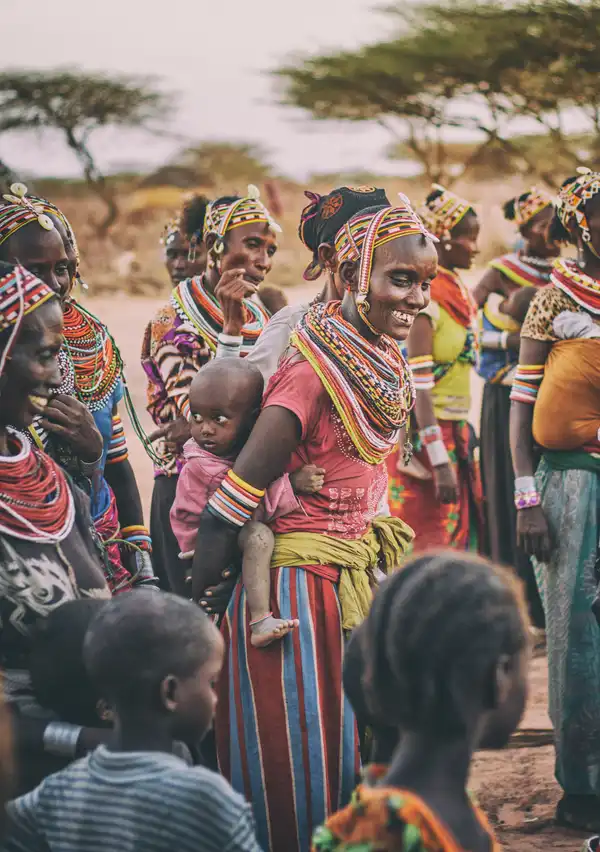
Everything you need to know about stem cells
What are stem cells, and what makes them so unique? What are the different types of stem cells, and how have they impacted modern medical science? Here is us answering all your questions about stem cells.

Once upon a time, the men hunted for wild animals while the women gathered wild plants, or so the story goes. This ‘man-the-hunter’ (Gurven and Hill, 2009) hypothesis emerges from the archaeological data gathered from our species’ age old hunter-gatherer societies. This hypothesis is also often used as a way of validating our existing gender inequalities in the labour force. According to the global wage report for the year 2018-2019 women were still paid 20 percent lesser than what men were paid. One of the many reasons behind why such disparity in pay or rank still exists in our society, is the notion that sexual division of labour and hence gender bias in the labour force is after all ‘natural’.
But is this really true? A group of scientists from the University of California are here to prove this age-old hypothesis of ‘Man-the-hunter’, wrong.
To give a little perspective, our distant human ancestors (Rabie, 2016) first appeared on this planet about 2.5 million years ago. Since then, until recently, we humans have been hunter-gatherers, largely depending on hunting wild animals and gathering wild plants for survival. It is only a few thousand years ago that agriculture and thereby civilization began.
So has sexual division in labour been the norm in our hunter gatherer past? Data from the burials of the more recent hunter-gatherers, show that it was largely the male burials that contained hunting tools. But why are we looking at human burials? This is because it has been observed that objects that accompany the dead in their burials most often are a reflection of those that accompanied them in their life. So, based on these observations, it is theorised that in the recent hunter-gatherers, hunting was a male biased behaviour. This seems to suggest that this kind of ‘gendered behaviour’ was due to the restrictions pregnancy and childbirth put on a woman.
But what about the earlier hunter-gatherer societies? Early survival largely depended on hunting of large game animals, known as ‘big-game hunting’. Considering that this was the time of the spear thrower technology, which was low in hunting efficiency, some scholars believe that big-game hunting was more communal and may have required participation from all. Also, alloparenting systems, which involved child-care by individuals other than the actual parents, was quite common. This may have freed women of child care demands.
So could it be possible then that unlike the more recent hunter-gatherer societies, the older ones had more ‘non-gendered’ labour practices?
A recent study published in the journal Science Advances, shows results from an excavation (Haas et al., 2020) conducted in 2018 in the Wilamaya Patjxa site of the Andes, South America. The excavation revealed an early hunter-gatherer burial of 6 individuals. Of these, 2 were buried with hunting tools, and 1 of the 2 was found to be a woman. The woman was buried with an entire hunting tool kit consisting of projectile points for killing animals, large scrapers and choppers to extract bone marrow, and smaller scrapers to do detailed hide work.
What makes this find more significant, is that the bone chemistry of the woman indicates she consumed a mixed animal and plant diet, and was most certainly a permanent resident of that region. This underlines the fact that hunting was indeed a very important element in the woman’s survival.
Curious by this find, the group reviewed literature for other burials in the early hunter-gatherer society. Consequently they found reports of 429 such burials from 107 different sites in America. Out of these, 27 individuals, whose sex was correctly identified, were buried with hunting tools. 11 of these were female and 16 were male.
What can we conclude from this?
Statistical analysis of these numbers suggests that female participation in big-game hunting ranges from 30-50%, implying early big-game hunting was likely gender neutral. In simple words, the find does not represent a rare instance of a female hunter in an otherwise male dominated hunting labour force.
However as economies changed, hunter-gatherer societies also changed. As plant processing and manufacture of tailored clothing began, new reasons for division of labour started to emerge. But when did these changes begin and what consequences did these changes have on our hunter-gatherer societies? These are some of the questions the group wishes to explore next.
Considering the labour gender-neutrality of our early-hunter gatherer societies, perhaps this is a good time to question the existing notion of gender-inequality in our labour market, being natural. As a consequence we may be able to get a step closer to eliminating our current gender pay gap. It’s also interesting to wonder why gender roles evolved in the recent human populations in the first place? Could there be a strong advantage of assuming these roles? Or could we as a species survive much better without it altogether? Studies like this and many more, may help us trace the footprints of our ancestors to better understand these gender based roles and might hopefully help us take the much needed steps towards gender equality.